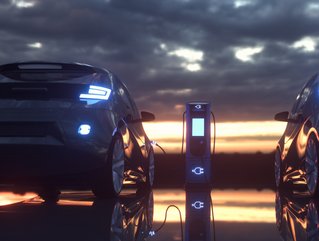ZincFive makes batteries for immediate power applications

As demand for renewable resources has increased over recent years, so too has the demand for rechargeable energy sources. Our electrified world demands safe, sustainable battery storage to maintain critical applications - and the traditional lithium-ion batteries used in the past fail to fulfil these requirements.
According to Steve Jennings, Senior VP Sales and Marketing of ZincFive.Inc, two of the most important performance parameters for batteries are power density and energy density. The category of power batteries have high-power-density, while energy batteries have high-energy-density.
"Our power battery is a high-power-density type battery that can discharge its energy at very high rates over shorter periods of time. It's what we call immediate power," says Jennings. "We're going to contrast that with batteries that many people use every day in consumer products like laptops, cell phones, EVs - items that you’d prefer to have a very long run time. That’s an energy application where the battery discharges more slowly over a long period of time."
Power batteries, on the other hand, are necessary for things that require an uninterruptible power supply, such as data centres and industrial facilities.
"Our high-power-density nickel-zinc batteries shine...because high power density doesn't mean just the ability to discharge the power very quickly at high rates," Jennings further explains. "It also means that you get a smaller physical footprint for the same amount of power."
Another favourable feature of nickel-zinc batteries is the doubled power density when compared to lead-acid batteries: in order to produce the same level of backup power, nickel-zinc batteries only need to be about half the size and half the weight.
Nickel-zinc batteries can reduce overall carbon footprint of energy sector
ZincFive has been working on sustainable battery chemistry for the energy market over a number of years. As a result of this dedication, the company has created nickel-zinc batteries that produce a much smaller carbon footprint for the same amount of power when compared to the existing options in the market - especially for data centres.
"Zinc battery chemistry is a game-changer for the energy space. Nickel-zinc (NiZn) batteries are the powerful, reliable, and safe choice for the future," says Jennings. "In addition, as sustainability becomes a top priority across major markets and corporations, zinc battery technology emerges as the new ‘power player’, challenging its predecessors, lead-acid and lithium-ion."
"Third-party expert analysis has validated that ZincFive's nickel-zinc batteries have a significantly lower end-to-end climate impact than lead-acid and lithium batteries," says Jennings.
Using set parameters, the life cycle analysis study compared lithium-ion, lead-acid and nickel-zinc batteries, including comparison of greenhouse gas emissions, energy footprint, water footprint, and volatile organic compound content throughout the sourcing and manufacturing process (cradle-to-gate).
"The study also looked at the climate impact for the batteries in terms of how fast the carbon gets paid back with the use of the battery," he adds. "Out of a possible 10 points, which is the best score you could achieve for climate impact, ZincFive scored a 9.4."
Further to the above, the study identified that during cradle-to-gate, ZincFive’s batteries have 63% lower greenhouse gas intensity than lithium-ion batteries and 37% lower than acid batteries. Further, the nickel-zinc batteries require 23-33% less energy as well during cradle-to-gate than lithium-ion and lead-acid batteries.
Additionally, in terms of water footprint - including water requirements for raw material extraction - nickel-zinc batteries require 96% less water than the average lithium-ion battery.
At the end user level, per US$1mn of ZincFive batteries purchased, a customer reduces 148,255 tonnes of CO2, a 537% improvement over lithium and a 1,700% improvement over lead-acid chemistries
"We're talking about megawatts of power in buildings such as data centres, and safety is paramount," Jennings emphasises. "And ZincFive's nickel-zinc batteries do not exhibit thermal runaway."
Underwriters Laboratories (UL) tested ZincFive’s products at the cell level, meaning the chemistry is functioning without a battery management system or fuse to prevent the battery from going into thermal runaway.
"We did not exhibit thermal runaway at the cell level, which means our battery chemistry is inherently safe," he concludes.
Nickel-zinc batteries are a 'reliable and sustainable alternative'
The batteries are bringing a new paradigm of reliability into the market, as individual cells that are weak or depleted remain conductive enabling the battery or battery string to discharge and carry the load. The concept itself, however, isn’t a novel one, as nickel-zinc chemistry has existed for more than a century.
"The nickel-zinc battery has been around for a long time. It was first patented by Thomas Edison in 1901," says Jennings. "But in those days, they didn't have the technology to make the battery as robust as we have today in the modern nickel-zinc battery that ZincFive makes."
On top of this, even with the company's plan to expand its productions, it has less concern about reserves as nickel and zinc are four and five times more naturally-occurring than lithium and lead-acid.
"We have a common element supply chain that is not under stress for availability of product. We have abundant materials, and they're also safer, nontoxic materials," says Jennings. "Our nickel-zinc batteries are fully recyclable, contributing to the low climate impact over the cradle-to-grave life cycle."
Sustainability is the headline for future energy trends, alongside demands for long-life, reliable operation and low maintenance care - all of which have the capacity to be met by ZincFive’s nickel-zinc transformational batteries.






